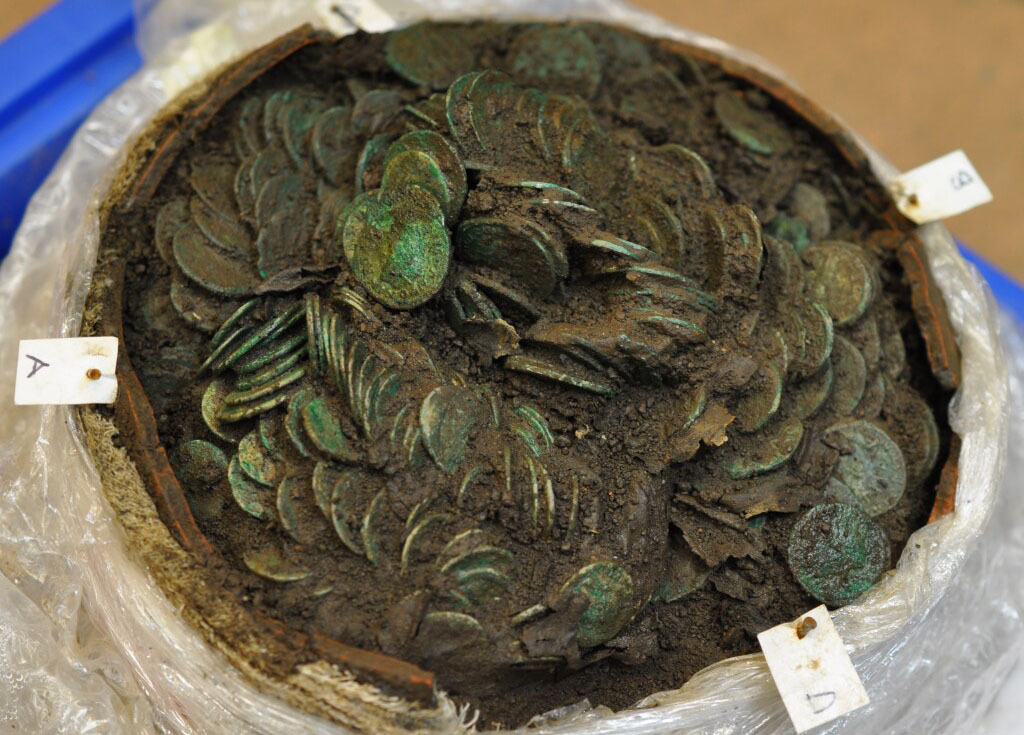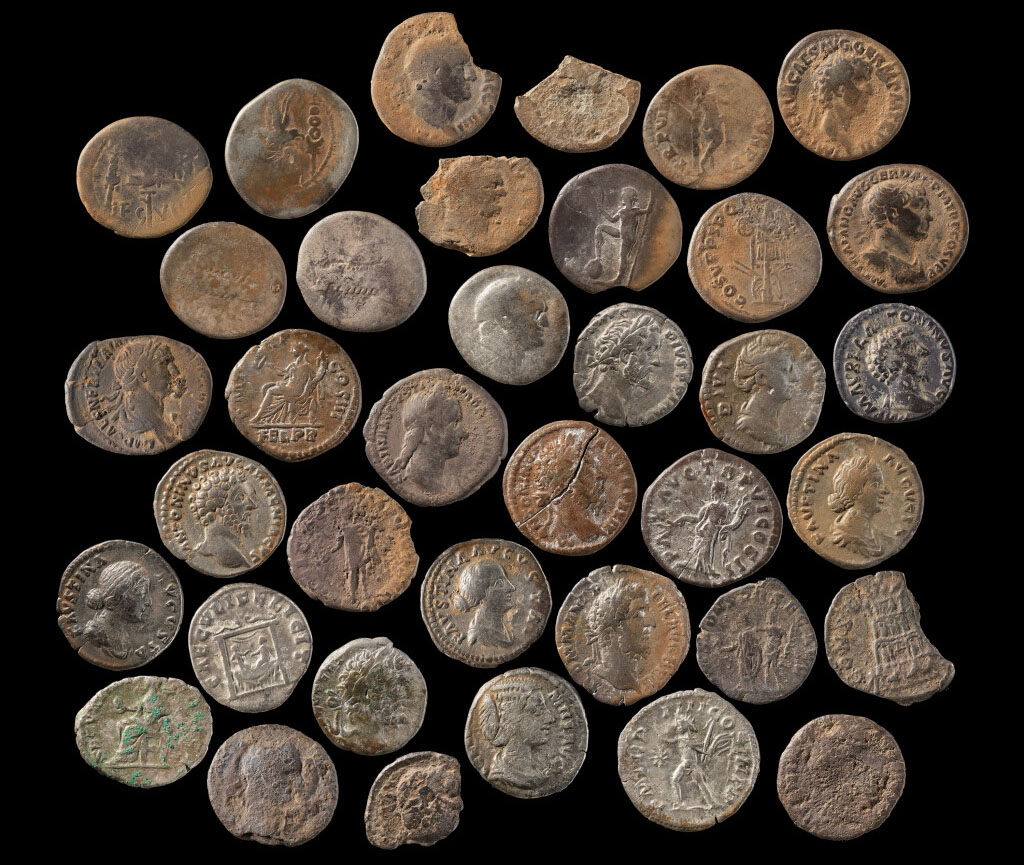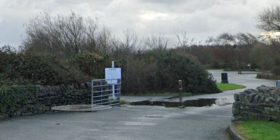Roman coin hoards discovered in Conwy Valley declared as treasure

Two Roman coin hoards discovered in the Conwy Valley have been declared as treasure.
The find was originally made by metal-detectorists David Moss and Tom Taylor in Caerhun Community, Conwy, during the winter of 2018/19.
They were declared treasure on Monday (9th October) by the Assistant Coroner for North Wales (East & Central), Kate Robertson.
The larger collection was uncovered in a ceramic pot and contained 2,733 coins, including a mixture of silver denarii minted between 32 BC and AD 235, as well as silver and copper-alloy radiates (also known as antoniniani) struck between AD 215 and 270.
The copper-alloy coins appear to have been put loosely in the pot, but most of the silver coins were held in two leather bags, which were placed at the top of the hoard.
The smaller collection is comprised of 37 silver denarii, ranging in date from 32 BC to AD 221, which were found scattered across a small area nearby.
When finders Tom and Dave discovered the larger hoard, they remembered tips they learned from the popular TV show Time Team and carefully excavated the pot.
They then wrapped it in bandages and reported the discovery to Dr Susie White from the the Portable Antiquities Scheme in Wales, based at Wrexham County Borough Museum and Archives.

David Moss, one of the finders, said: “We had only just started metal-detecting when we made these totally unexpected finds.
“On the day of discovery, just before Christmas 2018, it was raining heavily, so I took a look at Tom and made my way across the field towards him to tell him to call it a day on the detecting, when all of a sudden, I accidentally clipped a deep object making a signal.
“It came as a huge surprise when I dug down and eventually revealed the top of the vessel that held the coins.”
The coins were then taken to Amgueddfa Cymru – Museum Wales to be excavated and identified.
Louise Mumford, senior conservator of archaeology, said: “In the conservation lab, investigation at the top of the pot quickly revealed that some of the coins had been in bags made from extremely thin leather, traces of which remained.
“It is very rare for organic materials such as this to survive in the soil. The surviving fragments, which included two fragments of a stitched seam, were preserved and will provide information about the type of leather used and how the bags were made.”
TWI Technology Centre Wales in Port Talbot then offered to scan the larger hoard in the ceramic pot before the coins were removed.
Consultant engineer at TWI, Ian Nicholson, said: “Using our equipment, we were able to determine that there were coins at various locations in the bag.
“The coins were so densely packed in the centre of the pot that even our high radiation energies could not penetrate through the entire pot.
“Nevertheless, we could reveal some of the layout of the coins and confirm it wasn’t only the top of the pot where coins had been cached.”
Along with the CT scans, a series of photographs and 3D models were created during the excavation process.
It’s believed the coins were probably buried in AD 270 at a time when the Roman Empire was split between the Central Empire and the Gallic Empire, which included Britain.
The final coins in the hoard were issued during the reigns of Quintillus (AD 270) and Victorinus (AD 269-271).
Alastair Willis, senior curator at Amgueddfa Cymru, said: “The coins in this hoard seem to have been collected over a long period of time.
“Most appear to have been put in the pot during the reigns of Postumus (AD 260-269) and Victorinus (AD 269-271), but the two bags of silver coins seem to have been collected much earlier during the early decades of the third century AD.”
The two hoards were found close to the remains of a Roman building which was excavated in 2013 and identified as a possible temple dating to the third century AD.
It’s believed the coins were left there because of the religious significance of the site and may have belonged to soldiers at the nearby Roman fort of Canovium, located near Caerhun.
Llandudno Museum is home to several collections from Canovium fort and officials are said to be keen to acquire the hoards.
Dawn Lancaster, director of Amgueddfa Llandudno Museum, said: “This is very exciting news for Amgueddfa Llandudno Museum. The opportunity to purchase these important coin hoards which are associated with Kanovium Roman Fort will allow future generations to see and experience a significant collection of ancient silver coins dating from 32BC and representing 50 rulers.
“Working with Amgueddfa Cymru we can share the story of their discovery and the importance to Welsh cultural heritage of our area these amazing finds represent.”
Spotted something? Got a story? Send a Facebook Message | A direct message on Twitter | Email news@north.wales






